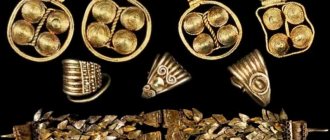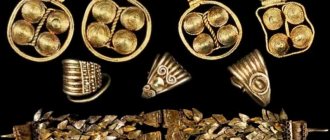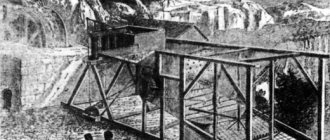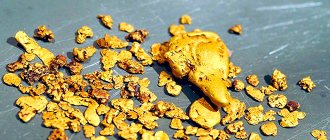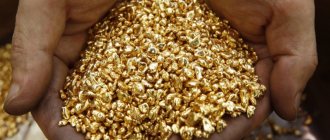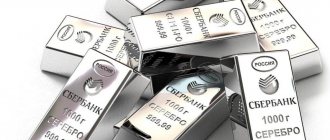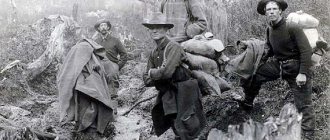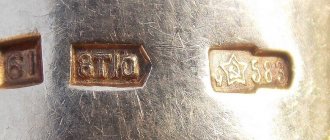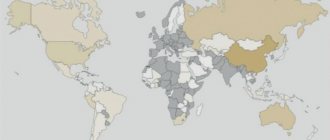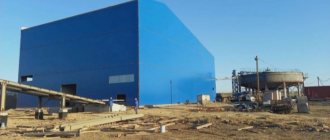Krasnoyarsk Territory - gold
When we, Krasnoyarsk residents, talk about the riches of our region, about how much and what it gives to the country, the conversation invariably mentions enormous forest resources, rich deposits of coal and oil, powerful power plants, space engineering, mining and production of non-ferrous and rare earth metals... And all this, translated into monetary equivalent, replenishes Russia’s budget and strengthens its economic power.
Gold stands apart in the list of the region's riches. It can also be valued in rubles and foreign currency, but in its natural form, in itself, it works to strengthen the financial well-being of the state. This has been the case at all times: the state’s gold reserves are a reliable guarantee of its financial solvency, the foundation of the treasury. More gold – physical, in the form of bars that lie in the Gokhran vaults – means more confidence in times of crises and cataclysms.
How much yellow metal is stored in the bins of the Motherland today is a secret figure. But the fact that a fifth of Russia’s gold reserves is mined in the Krasnoyarsk Territory is no secret.
Deep in Siberian ores
Private gold mining was allowed in Siberia in 1835. Then they began to open mines in the Yenisei province, conditionally classifying them as the Northern and Southern regions. Northern - the mines of the Yenisei district, Southern - the Achinsk, Minusinsk, Krasnoyarsk and Kansky districts. In first place was, of course, the Yenisei district, more precisely, the right bank of the Yenisei, where countless gold-bearing rivers were grouped in two mountain nodes, separated by the Bolshoi Pit River. In the southern Yenisei taiga, Sukhoi Pit and Uderey flowed from the peaks. And in the northern taiga, on the other side of Big Pit, from another mountain range, Wangash and Enashimo fell. These and other rivers with their numerous tributaries formed the gold-bearing Yenisei region.
The discoverer of industrial gold mining in the Angara region is considered to be Gavrila Masharov, a Kan merchant, who in 1839 mined his first 344 kilograms of gold on a tributary of the Uderey - the Small Shaargan. With Ekaterinburg friends Yakim and Anikei Ryazanov, he founded a company that by 1845 received 53 pounds of gold from the Yenisei mines. The growth in production was achieved not through new technologies, but through the extensive exploitation of gold-bearing areas.
They were looking for loose gold, blindly. They found nuggets, washed the sand in trays, and took what they could get their hands on. Moreover, they looked for the precious metal everywhere, even within the city limits. In Krasnoyarsk, gold was found on the Bugach River and on Afontovaya Mountain (opposite the modern railway station). A team of prospectors worked at Stolby, which is why the stream received the name Roev - from the word “dig”.
Chance could make a beggar rich or turn a rich man into an outcast. The Myasnikov brothers are an example of this. Nikita Myasnikov, merchant of the 1st guild, was lucky. In 1839, on a tributary of the Uderey - the Peskina River - he discovered the richest of all the Uderey mines, Spassky, which yielded 830 pounds of gold in 50 years. In 1840, the lucky one received 47 pounds of gold from the mines, in 1842 - 56 pounds, in 1848 - 58 pounds. Then production decreased, and Nikita founded a shipping company on Baikal, investing 600 thousand rubles there. But steamships are not mines, they do not provide quick profits, and he left commerce, unlike his brother, on time... Brother Nikolai was brought to prison by gold, where he died.
The Minusinsk, Achinsk, Kansk and Krasnoyarsk mines were not comparable to the Yenisei mines, where 26,111 poods were mined over 50 years (until 1889), but they also provided a good income. During the same time, 2 thousand poods of gold were mined in the Minusinsk District, 938 in Achinsk, and 90 poods in Krasnoyarsk.
Since 1860, things have declined: food prices have risen, wages have fallen, work has increased - everything that could be taken “at the top” was taken. Serious geological exploration was needed, sophisticated equipment was required.
When the construction of the Siberian railway began, where they paid better, food was cheaper, and working conditions were not so harsh, workers began to flee en masse from the mines. True, the Kuznetsovs, Gadalovs, and after them other merchants soon acquired dredges, and the gold industry took off again.
Victory Gold
In the early 20s of the last century, the nationalization of mines began in our region, which were in a deplorable state after the revolution and the Civil War. The gold industry had to be raised from ruins. In 1920, the state association Enzoloto was created (since 1932, the Yeniseizoloto trust), which included all the nationalized mines.
It included all dredge enterprises of the North Yenisei group of mines with the Avenirovsky mine. In the spring of 1921, the Avenirovsky mine was stopped and mothballed. In December 1922, it was put into operation again, but under the name Sovetsky Mine. On December 16, 1922, the village, which today we know as Severo-Yeniseisky, became officially known as Sovrudnik. On April 1, 1932, the Presidium of the All-Russian Central Executive Committee adopted a resolution on the formation of the North-Yenisei region with its center in the workers' village of North-Yenisei.
In the same year, the Saralinsk and Artyomovsk factories were built, a year later the first electric 210-liter dredge No. 1 and a steam power plant on the Uderey River were put into operation, the North Yenisei, Ayakhtinsky, Perevalnensky, Kommunarovsky, Saralinsky, Balakhchinsky, Znamenitovsky mines were in operation, placer deposits were developed throughout the region.
By the early 1940s, the region's gold mining industry was operating at full capacity. During the Great Patriotic War, Krasnoyarsk became the forge of the country's gold and foreign exchange reserves. In addition to Yeniseizoloto, there are the Khakaszoloto, Minusazoloto, and Tuvazoloto trusts.
The country has set an extremely clear task for the Siberians: to extract the maximum possible amount of precious metal for the treasury. The USSR needed it for the purchase of military equipment, food, and medicine.
Tens of thousands of strong, able-bodied men went to the front. Women took their place in production; they came to the mines and dredges. Today it is difficult to even imagine at what cost they managed to fulfill the production plan. And yet they even exceeded it. So, for example, at Sovrudnik in 1941 - by 110%. “The smelter of the gold extraction factory Vasilyeva systematically gives two standards,” wrote the Yeniseiskaya Pravda newspaper in January 1942.
Immediately after the war, two special camps were organized in the North Yenisei region, where Japanese prisoners of war were taken to work in the mines. According to the Krasnoyarsk Memorial Society, Japanese prisoners also worked in the Khakaszoloto trust, 1,450 people at two mines - Kommunar and Transvaal.
In 1961, the reconstruction of the Soviet mine and factory complex began. On August 29, 1964, the Central Committee of the CPSU and the Council of Ministers of the USSR adopted a resolution on the reconstruction of the Sovetskaya mine and the North Yenisei mine as a whole, increasing production volume by 3.5 times.
The main event for the entire gold industry of the region occurred on September 20, 1975, when the discovery of the unique Olimpiada gold deposit in the North Yenisei region was officially announced - the same one that is currently being developed by Polyus CJSC, which has changed owners several times in recent years. However, the redistribution of property in the region's gold mining industry is a separate issue. The main thing is that metal mining at the Olympics is growing from year to year due to the use of new technologies and proper organization of labor. Here they know how to extract gold even from the poorest ores.
Ups and downs
Received a license to develop the Olimpiadinskoye field in 1994. Two years later, the Olimpiadinsky GOK was put into operation, and in 2000, in 10 months, the world's largest complex for processing sulfide-arsenic ores was built and put into operation. The Polyus mining and processing plant grew in 21 months, although according to the project, up to ten years were allotted for construction.
At that time, no one in Russia was building such large gold mining enterprises, and at such a pace, in the remote taiga, in the Far North.
Another giant of the region’s gold mining industry is Sovrudnik LLC, which currently ranks second in the region and sixteenth in Russia. Meanwhile, in its recent history there was a period when it was about the death of the enterprise. In 1994, the North Yenisei Mining and Processing Plant, part of OJSC Zoloto, was declared bankrupt. (One of our Russian paradoxes: a gold mining company is bankrupt!) The Sovetskaya mine was flooded along with mining equipment, cables and other equipment - with everything that had not yet been taken away and scrapped. The gold extraction plant has practically stopped. For about a year, people managed to exist without work, and therefore without wages. The same situation happened at the “New Kalami” and “Vangash” quarries: production collapsed, people fled.
But the leadership of the region and district did not allow the enterprise to go bankrupt. At the end of the “dashing 90s”, Sovrudnik LLC was created on the ruins of the North Yenisei Mining and Processing Plant. In 1999, he received a license to mine gold ore at the Eldorado deposit. This opened a new era of stability and prosperity for the Sovrudnik gold miners and for the residents of the entire North Yenisei region. The company annually increases its production and processing volumes. If in 1999, a year after its formation, the team extracted 190 kilograms of metal, then in 2006 - about two tons. And last year - more than four.
In the same 1999, the New Kalami and Vangash quarries were transformed into an independent enterprise - the Drazhny Mine. The founder of the LLC was the district administration. People breathed a sigh of relief. They started allocating money. Spare parts were purchased and production began. Employees began to return to the company, and staffing was gradually completed. Today, about a ton of gold is mined here per year.
Platinum, iridium and palladium...
Remember at the beginning of this material we talked about gold bars coming to Gokhran? They are smelted in our city. And not only gold ones. At the non-ferrous metals plant named after V. N. Gulidov. This is our fellow countryman, an outstanding engineer and production organizer, laureate of the State Prize. He headed the company from 1988 to 1999 and made a great contribution to its development.
The decision to build a refinery in Krasnoyarsk (as Krastsvetmet was previously called) was made in 1939 by a resolution of the Central Committee of the All-Union Communist Party of Bolsheviks and the Council of People's Commissars of the USSR.
Platinum and palladium were first refined here from Norilsk sludge on March 23, 1943. Large-scale production of precious metals began in 1945, with the first platinum ingots produced in 1946 and palladium ingots in 1947.
Krastsvetmet is the largest plant in Russia for the production of precious and rare earth metals. And the only enterprise in the world that refines gold, silver and all platinum group metals on an industrial scale. It maintains industrial relations with almost the entire business world. Among the plant’s partners are enterprises from Russia and other CIS countries, companies from the USA, England, South Africa, Canada, Australia...
The plant refines 90% of domestic platinum and palladium, almost 100% of satellite metals, and up to 30% of gold.
In 1994, the largest jewelry production in Russia was launched at the plant. Here, according to their own sketches, they produce products from alloys of gold, silver and platinum. According to orders from organizations licensed to operate with precious metals, Krastsvetmet produces measured bars from gold, platinum and palladium.
The plant processes commercial platinum-containing gold, secondary platinum-containing raw materials supplied by many enterprises in Russia and the CIS countries, spot gold coming from gold mining cooperatives of the region and the country, as well as platinum-containing materials from foreign companies.
Non-commercial production
Non-industrial gold mining
Artisanal gold mining is carried out by prospectors in places where industrial mining was previously carried out, as well as in places where its accumulation is insignificant and it is not economically profitable to build factories and processing plants.
In Africa, South America, and Asia, tens of millions of people are involved in artisanal fishing. Prospectors use manual mining technology, using a tray, which was invented several centuries ago, since the development of this fishery, and, oddly enough, is still relevant today.
The fact is that on an industrial scale, gold mining is carried out only in large deposits and mainly of the indigenous type, and for placer deposits they use dredges and private miners. In some places there is no point in using expensive equipment, and mining companies use individual miners using manual sand washing in a tray.
In Russia, independent fishing is prohibited by law; its implementation requires a license, which is almost impossible for an individual entrepreneur to obtain. Therefore, they get out of the situation by concluding labor contracts with large enterprises that have this permit for mining activities.
The manual technology of gold mining using a tray is quite simple. In the area of the proposed placer on the banks of rivers, prospectors scoop up bottom sand and wash it under the running water of the river. Gold, even the smallest size, settles at the bottom of the so-called mining moss - a vinyl corrugated coating that traps gold particles, and waste rock and sand are washed away.
If gold ore has large accumulations of tiny particles, you can use chemical purification methods - amalgamation, cyanidation, leaching, but these are quite expensive methods; due to the high cost of the reagents and the low concentration of gold in the rock, they are not used by individual miners.
Uncontrolled land
That day it became sharply cold in the south of the region and snow fell. The surrounding villages only learned about the tragedy around lunchtime. Residents of Shchetinkin itself realized what had happened, even later - from here to the site of the breakthrough 17 kilometers. By the afternoon, emergency services and police cars began rushing back and forth along the highway, and several helicopters hovered over the village at once.
“Three Emergencies Ministry cars rushed past me, then four more police officers, a Gazelle from the investigative committee, then several ambulances. I decided that this was a training exercise; this had never happened here. Our road is quite deserted, although it goes to Krasnoyarsk, it’s half gravel; for 200 kilometers you drive like on a washboard,” says Igor, a private driver. “Then my wife called: my nephew wasn’t getting in touch, and he’d recently gotten a job with the prospectors.” I got nervous, but there was nowhere to go, I was on a flight. By the time I got home, my nephew got through. He was not injured and spent the night in the house above.
Krasnoyarsk region. At the site of a dam break on the Seiba River near the village of Shchetinkino in the Kuraginsky district Photo: Press service of the governor of the Krasnoyarsk Territory/TASS
Igor walks the route Kuragino - Krasnoyarsk twice a day. There is no public transport here; villages can only be reached by train - the villages are located right along the railway. But the rest of the time you have to call private traders.
The tragedy affected almost everyone in the village. “My daughter called me from Lesosibirsk: “Mom, are you being evacuated?” At first I didn’t understand anything. Then it turned out that there was such a problem. Closer to lunch, my son was sent to transport EMERCOM teams from the breakthrough to the village. It’s still there, there’s not even time to have lunch,” says a local resident.
The head of the village, Vladimir Shchekalev, is gloomier than a cloud, tired and disheveled. I just arrived from the emergency camp, but I’ve already spent three days on the dam. Now he only has 15 minutes to change clothes and have something to eat.
— Are they looking for people?
— They are searching, the radius has been increased to 30 kilometers down the river: heavy equipment, dogs, helicopters. Rescuers promise that they will search until the last. But there is little hope, or rather, almost no hope. They all ended up in icy water, naked. And then there was snow and cold temperatures, at night it was minus eight. When the first ones were pulled out, they died in their arms. They carried out two at the same time, they were like ice. One was not transported, the other survived.
— What do you think is the cause of the tragedy?
- Of course, negligence, there’s nothing to say here. But nature also “helped”. A few days before this there was a good “plus” - this is generally an anomaly for our area. And on Friday evening it started to rain, the temperature dropped sharply, and it exploded overnight.
Rescue work Photo: Main Directorate of the Ministry of Emergency Situations of the Russian Federation for the Krasnoyarsk Territory/TASS
—Have you seen before where and how miners work?
- What are you talking about! They have cordons there, their own police, security service, and guards. No one will be allowed anywhere near there, only with passes.
— A state within a state, or what?
- Something like that.
The head of the Kuraginsky district, Vladimir Dutchenko, also told reporters that he has no authority regarding the natural resources in his own region. All this, according to Russian legislation, is under the jurisdiction of the federal government.
Thoughtfulness down to the smallest detail
New dormitories with 410 beds were built next to the existing one. They have all the conditions for living and resting of employees - from air conditioning and a safe for personal belongings to recreation areas with a kitchen on each floor.
“They are equipped with the necessary household appliances and utensils (electric stove, toaster, thermopot, multicooker, microwave oven). While cooking, you can relax, watch TV, sitting on the sofa,” said Pavel Nikolaev, head of the housing management department of the Polyus Krasnoyarsk UI.
The gold miners' rooms have all the necessary household appliances and furniture: TV, refrigerator, wide comfortable beds with bedside tables, wardrobes, tables and chairs, toilet and bathroom. The windows have thick curtains that block out daylight so that workers can rest during the day after a night shift. Above each bed there is a lamp with control that allows you to set the required brightness level.
Kristina Islanova, the duty officer at the new dormitory, has been working in her position for almost a year and says that this is the first time she has seen such dormitories:“The walls are covered with special materials that do not need to be painted over time. There are no utility rooms in the basement. On the ground floor of each dormitory there are laundry rooms with washing machines, rooms for drying and ironing clothes, storage rooms for dirty and clean linen. There are rooms for drying outerwear and separate rooms for drying shoes, and rooms for storing personal belongings. It is important that now each room has its own personal shower, and not a common one for the entire block, as it was before.”
Investments in gold deposits of Siberia
In recent years, investment in the gold mining industry of the Siberian Federal District has increased significantly. Along with the regions that are leaders in the production of the yellow metal, areas located in Altai and Kuzbass are of interest to investors. During the summer of 2015, local government bodies in charge of subsoil use issues held more than 10 auctions for the purchase of rights to use mineral-rich areas.
The largest part of these areas is located in Kuzbass. The reserves of the precious metal in this region are incomparable to the deposits of coal, which is called “black gold” here. Gold mining is promising in Kuzbass. According to geologists, up to 500 tons of yellow metal are stored in the Kuzbass lands, but this estimate remains unconfirmed.
Today, alluvial gold is mined using dredges running along river bottoms. Metal is extracted in this way in areas near Spassk and on Usa. The new alluvial areas that were transferred to the distributed fund have reserves of almost 800 kg, the predicted resources are characterized by a figure twice as large.
Three more sites are currently undergoing preparation for bidding. Work on two of them is complicated by the fact that in addition to gold they contain huge reserves of coal, and the third is rich not only in placer gold, but also in ore. The forecast volumes of ore in this territory are estimated by experts at 12 tons of metal. The development of these new areas will be carried out by the company that wins the auction in the fall of 2015.
Interest in Kuzbass gold is growing every year. To date, one and a half hundred gold deposits have been discovered here, most of which are of the alluvial type. Both local companies and mining giants from neighboring regions are paying attention to the development of both placer and ore deposits. Enterprises of the Krasnoyarsk Territory and Irkutsk Region are seriously interested in gold deposits in Kuzbass, the extraction of which already produces more than a ton of the yellow metal annually.
Gold from Siberia forms the basis of the gold mining industry in Russia. The region has high potential for increasing production volumes both through work on already explored known deposits in the Krasnoyarsk Territory and Irkutsk Region, and through the search and development of ore deposits in Altai and Kuzbass. The Altai and Kuzbass lands, rich in gold and other important minerals, are of the greatest interest to investors in anticipation of future income, since geological exploration confirms the presence of gold, coal, and rare base metals here.
